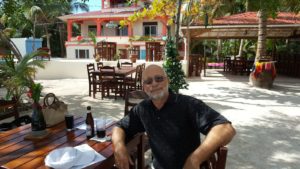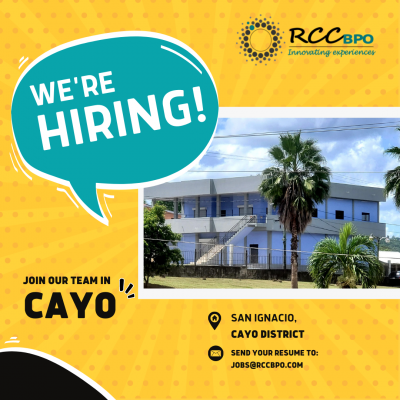- Submit News
- 501-666-6726
- [email protected]

Airlines will not sell alcoholic drinks in flight due to COVID-19
June 17, 2020
An open letter to the GOB and Immigration Department
June 17, 2020Posted: Wednesday, June 17, 2020. 1:15 pm CST.
The views expressed in this article are those of the writer and not necessarily those of Breaking Belize News.
By Nick Scavone: Never before has the global tourism industry faced a challenge like the one before it now. If ever there was any doubt among the leaders of the world about the economic impact of tourism and its many associated businesses and industries on the well-being and economic vitality of a country it has been dispelled. The near total shutdown of the service industry has brought great hardship on many and the effects of even this short disruption will have repercussions far into the future. To battle COVID the shutdown was the right thing to do. To phase reopening was the right thing to do. To listen to the medical experts about the nature of the dangers we faced was the right thing to do. Now, however, as the pandemic drags on and, just like the energy we store in our muscle tissue to allow the body respond to physical demands, our resources have been depleted and we face economic and social exhaustion. The first phase of layoffs and worker furloughs was bad and we exerted every effort at our disposal to provide relief. Companies that could afford it maintained staff, reduced pay, reduced hours and tried to hold the line, helping where they could. Now, that is coming to an end. The more financially able companies, our largest employers are nearing their limits. This will spark a new wave of unemployment and further strain the ties that bind our society together. So, what now?
The danger is not over, not by any means, and a vaccine or treatment may still be a long way away. Further away than we have time to wait for. Now we have to wake up to the new reality of a COVID world where risk needs to be managed and lessons learned from others who have made the choice to come out and face the danger in a responsible way. From what I have seen and read over the past months there is emerging a possible path that can be taken to manage our risk while reactivating sections of our economy. What follows is not a complete roadmap for reopening but rather a collection of actions and initiatives that we as a people can rally around and use to regain some small measure of the economic prosperity that has been stolen from us.
Step 1: Limit the Exposure – Containment
Opening up is an idea that is fraught with risk and some fear. We know, from medical studies and from testing that has gone on in many countries that COVID is on the one hand, highly contagious but, on the other hand, simple steps can be taken to limit the chance of catching COVID. We know that some individuals are more susceptible than others to contracting a severe life-threatening case, in fact we know that the majority of cases are not life threatening. Finally, we know that climate and weather conditions play a part in the longevity of the virus on some surfaces.
Taking what is known and recognizing the dangers, we need to contain the risk to an easily defined area. The reopening will need to be closely monitored and conditions controlled to insure we act in a responsible manner to protect our larger country and population.
Belize is uniquely suited to do this by opening tourism up and limiting it to only the two main Cayes; Ambergris Caye and Caye Caulker. Not to deprecate the value of the other tourism areas, or to minimize their economic pain, but the Cayes offer the country a unique opportunity to open the country in a controlled way that limits the risk to a defined area and contains any exposure to a small population. Later, once measures can be devised and tested, based on the Caye experience, opening can be rolled out to other selected locations on the mainland. What are the advantages to using the Cayes to reopen?
– They are a defined area that can be closed off and monitored.
– Access can be strictly controlled.
– They have a small population well versed in the tourism service industry and easily trainable in the manner of service delivery the opening will require.
– Setting up of medical resources to monitor and respond to any surge in cases can be done less expensively than in other areas of the country.
– The area can be quickly closed down and any outbreak contained if the disease is found to have spread.
Step 2: Prepare the Tourism Space – Popular Support and Education
This is not an issue that can be forced on a people. A program explaining what is being attempted and the rules under which it will operate has to be provided to the people of the Cayes. They have to want to have this happen and agree to the restrictions and protocols under which they will have to live and work while the tourism industry begins to reawaken. The local leaders and the people will need to have to have the opportunity to vote to agree to the program and the restrictions. They have to ‘Buy IN’ to the effort. The pros and cons will need to be presented as well as the potential for a spike in COVID cases. This has to happen before anything else can proceed.
Of equal importance is to educate the general population to let them know this is not a San Pedro solution, it is a test bed. It is a way to see if we can move forward for the betterment of all Belizeans. It only happens to be set in the Cayes because of the nature of their geography, not because of any entitlement.
Include the fact that the resurrection of the industry in the Cayes also will benefit the other productive sectors as it will grow our market for local goods and services. It has to be seen as a cooperative effort, supported by the entire country.
Step 3: Define the Tourism Experience – Laying the Foundation
Tourism and the tourist experience will have to change from what we previously offered. The new tourism plan will need to comprise several components that taken together, will allow Belize to offer a safe, enjoyable and unique tourism experience. Those components will need to be clearly defined so they can be explained to the people and businesses on the islands. Some of the general components that have to be a part, but will require refinement are as follows:
– A special medical task force will need to be created and dispatched to the island to monitor and be ready to address any suspected or real cases. All residents will be encouraged to be on the lookout for any visitors that display symptoms. A supply of tests will need to be available as well as a space identified for quarantine if it is required. This means the government will need to spend some resources, perhaps with the help of the private sector to make this a reality.
– The COVID SafeStay requirement that the BTB has been floating needs to be fast tracked and, with input from the hospitality sector, made a requirement for operation. This means, social distancing, contact-less, where possible, check-in and check-out, taxi cabs putting up guards between drivers and passenger compartments, face masks in all service establishment and the use of technology where possible to reduce person to person contact during the service delivery. General provisions also need to be placed on regular residents to also adhere to safety protocols as they go about their daily routines. Visitors will be everywhere on the Caye so they have to protect themselves to a greater degree. Only certified taxis and accommodations can be allowed to service visitors.
– All access to the island must be strictly restricted and water taxi and air routes monitored to control access while we are evaluating the impact of visitors to our country. If you live here fine, but if you have no reason to be here then access is denied.
– No mainland excursions/tours would be allowed and no movement between Cayes.
– Visitors must download one of the social tracking apps available (the actual app can be specified by the Belize MOH so we have uniformity) so the medical authorities can easily perform social tracking in the case of a suspected or actual infection.
– Have the Airlines take temperatures of visitors pre-boarding of their flight to Belize to screen out any obviously sick visitors. Fast Testing does not work and standard tests take too long and are also unreliable, however if a person has proof of a negative test 48 hours prior to departure and can show it that would be good.
– Visitors luggage would need to be sprayed with disinfectant (electrostatic guns would be a good thing but they are expensive) before being placed on the turnstile for retrieval. Customs and Immigration would be required to wear masks and gloves.
– Visitors would have to be social distanced while awaiting onward transport to water taxi or airline to the Caye. Water Taxi passengers would not be able to stop en-route but taken directly to the boat terminal where procedures can be put in place to protect them.
– As visitors would be expected they can be picked up by the hotels or by hotel taxi’s under social distancing requirements as already mentioned.
Step 4 Selling the Program – Welcoming the World with Caution
Working with our travel partners in the travel trade and the airlines the BTB needs to mount a travel promotion campaign that targets those markets that are deemed safe for outbound travel to Belize. Specific countries and regions are known to be COVID hotspots or are known to have high rates of infection. These areas and regions are to be avoided. Specific feeder markets where the disease seem more under control and that have direct flight to Belize should be the target of the reopening campaign. The airlines can be a help in the marketing as can other targeted marketing efforts.
For example, right now the UK does not have control of the infection and should be avoided. Other European counties seem to have a lower infection rate and would be targeted markets depending on accessibility.
Certain US regions and cities are also better candidates for infection free, or reduced risk visitors than others and they can be targeted as well. Canada has potential as a market since it is already poised to allow travel.
Marketing programs will need to focus on the nature and type vacation experience being sold and trumpet the bold steps we, as a country, have taken to protect our visitors and provide as COVID free vacation as is possible. Our goal is to emphasize the safety and reduce any anxiety. Coordinated marketing placement with the private sector and the various industry associations can help to magnify the response rate.
Step 5: Analysis and Roll Out – Expanding and Evaluating
Finally, the lesson learned and the effectiveness of the opening can be judged and then changes made where necessary. Once we have information on the positives and shortcomings of the controlled tourism experience, we can modify the framework and roll it out to other main tourism areas that lend themselves to this type of focused effort. Placentia would be the next likely candidate location as it may be slightly better to isolate than say Cayo.
Conclusion – The Economic Imperative To Try
Nothing is a sure thing and no plan is perfect. Sometimes the least of evils is the best that can be obtained. To do nothing but wait is to gamble that our industry can recover from its lowest point ever and that we as a people and a society can stay together and weather this storm, and emerge intact.
Regardless of the steps we take the recovery will be slow for those of us that rely on international travel. We will be the last to recover. Our competitors have already opened and Jamaica has opened with a similar plan and is expecting 6,000 visitors to come and replenish their coffers, and add some new blood to an economy as drained as ours. Greece has also capitalized on their islands as a place to start the process of reopening, so the path has been cleared for us to also make this monumental step. The first steps to recovery will be small, but it is vital to our future and the speed of our eventual recovery that we take steps to stay as part of the international tourism industry and preserve our place; a place that so much effort and treasure has been spent over the years to secure.
The ripple effects of this effort are vast. Airlines are looking for places to fly people to, travel trade wants to urge people to resume travel, locally, any activity returns our people to productive jobs, government regains tax revenue. As an example, the fishermen are hurting because the Co-Op is only paying $12 per pound for Lobster, versus $25 last season. Why? Because the export markets have shrunk and the local markets are virtually non-existent. Even a small uptick in visitors could help re-energize that industry and many more.
We need to have hope, we need to show that we can work our way out of this and we need a collective purpose that we can rally around. Be cautious, manage the risk, but wait and hide no more.
NB: Nick Scavone is a long time resident of Belize and a naturalized Belizean. He has worked in the hospitality and tourism industry for over 40 years in many capacities and in many countries. While in Belize he has been a professor teaching hospitality at Galen University, where he wrote the original course work, been a manager for large and small hotels and now is a consultant in Hospitality IT, Marketing and Operations.
Advertise with the mоѕt vіѕіtеd nеwѕ ѕіtе іn Belize ~ We offer fully customizable and flexible digital marketing packages. Your content is delivered instantly to thousands of users in Belize and abroad! Contact us at mаrkеtіng@brеаkіngbеlіzеnеwѕ.соm or call us at 501-612-0315.
© 2020, BreakingBelizeNews.com. Content is copyrighted and requires written permission for reprinting in online or print media. Theft of content without permission/payment is punishable by law.




































































Comments